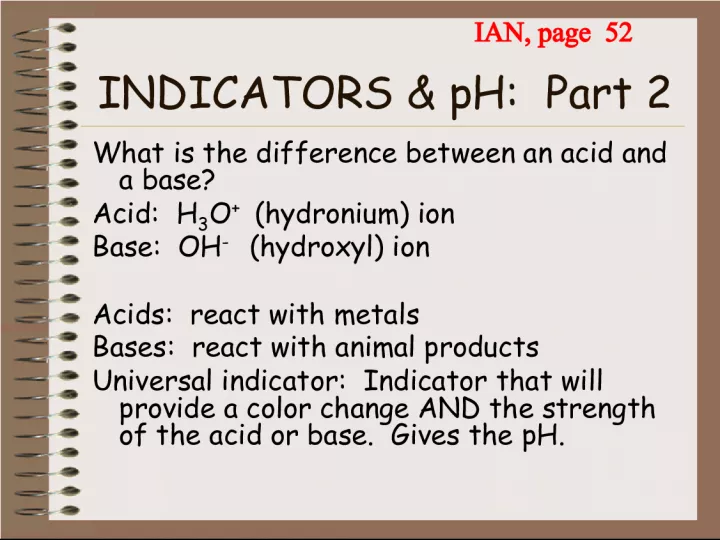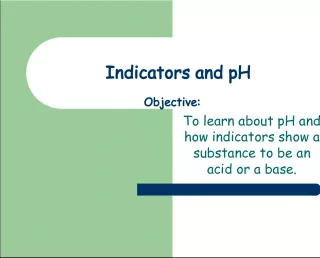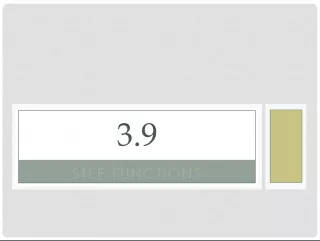Understanding Indicators and pH: Part 2


In this article, we will delve deeper into the topic of indicators and pH. We will explore the fundamental differences between acids and bases, including the ions they produce and their reactivity
- Uploaded on | 1 Views
-
 meganmorin
meganmorin
About Understanding Indicators and pH: Part 2
PowerPoint presentation about 'Understanding Indicators and pH: Part 2'. This presentation describes the topic on In this article, we will delve deeper into the topic of indicators and pH. We will explore the fundamental differences between acids and bases, including the ions they produce and their reactivity. The key topics included in this slideshow are . Download this presentation absolutely free.
Presentation Transcript
Slide1INDICATORS & pH: Part 2What is the difference between an acid and a base? Acid: H 3 O + (hydronium) ion Base: OH - (hydroxyl) ion Acids: react with metals Bases: react with animal products Universal indicator: Indicator that will provide a color change AND the strength of the acid or base. Gives the pH. IAN, page 52
Slide2pH: Number between 0 - 14ACID neutral BASE 0 1 2 3 4 5 6 7 8 9 10 11 12 13 14
Slide3WHAT IS THE pH?Choose between 0 6 7 8 14: 1. A strong acid would have a pH of ___ 2. A weak acid would have a pH of ___ 3. A strong base would have a pH of___ 4. A weak base would have a pH of ___ 5. If a substance is neutral, it has a pH of ____
Slide4Procedure1. Predict whether each liquid is acid, neutral, or base. 2. Test each liquid with universal indicator. Use only one drop of the indicator for each test. Record the color change. 3. Record whether the liquid is acid, base, or neutral and record it’s pH. 4. Use Color!
Slide5Predict color pH acid/base/neutral?Ammonia Distilled Water M.O.M. Lemon juice Milk Vinegar Pg. 51 of IAN
Slide6Conclusions• 1. Rank the solutions from most acidic to most basic. Make sure you add their pH. •























